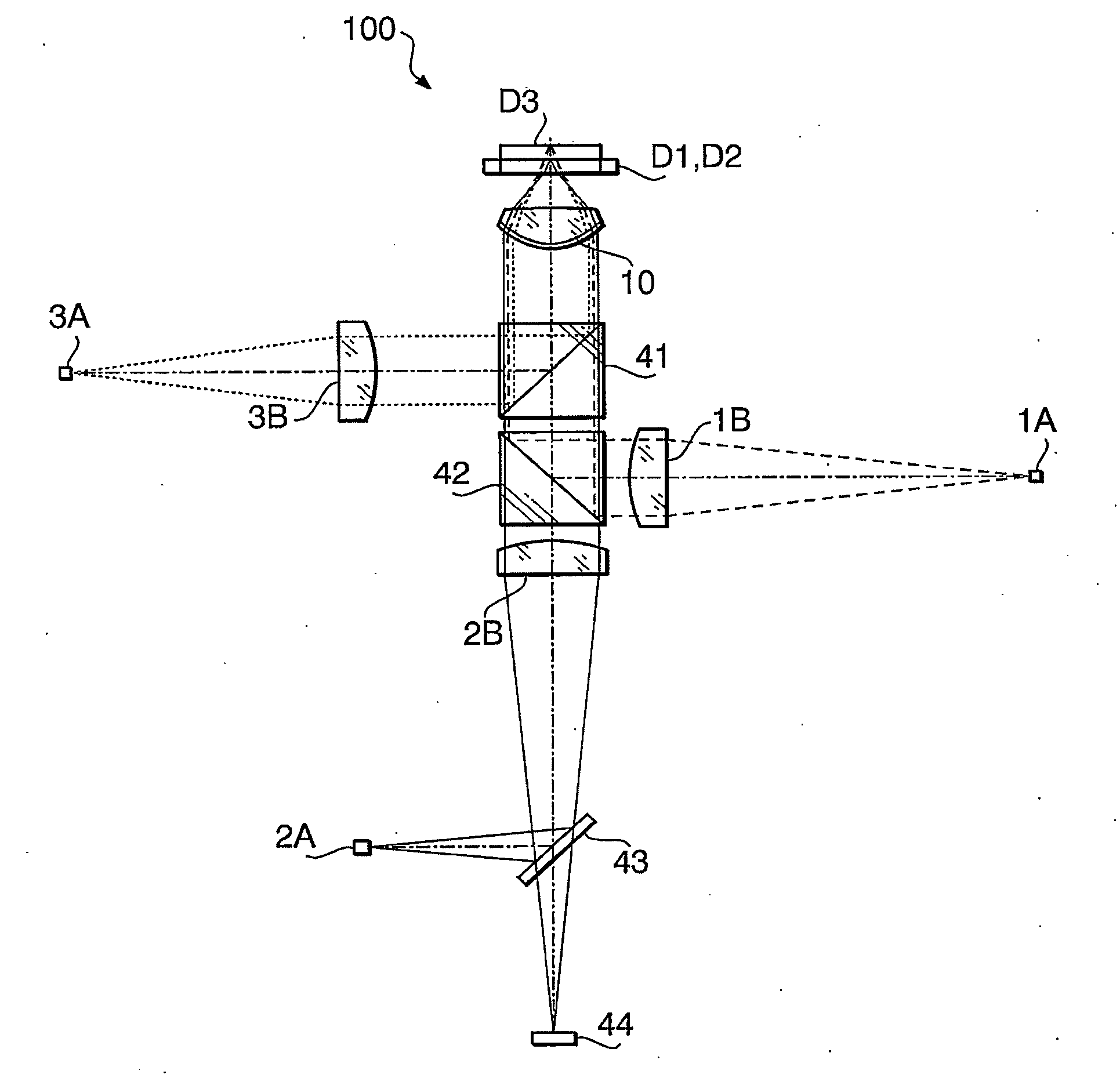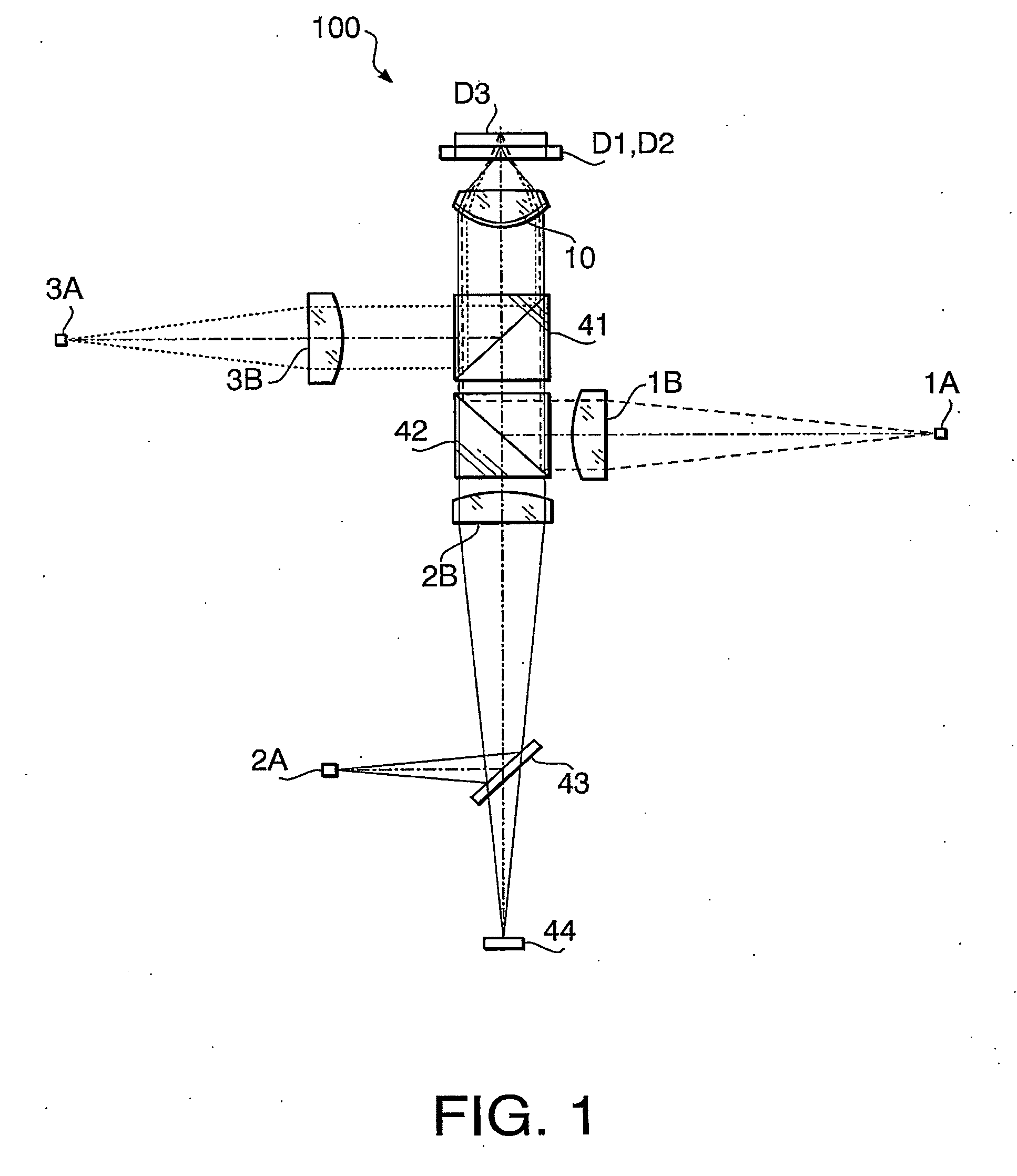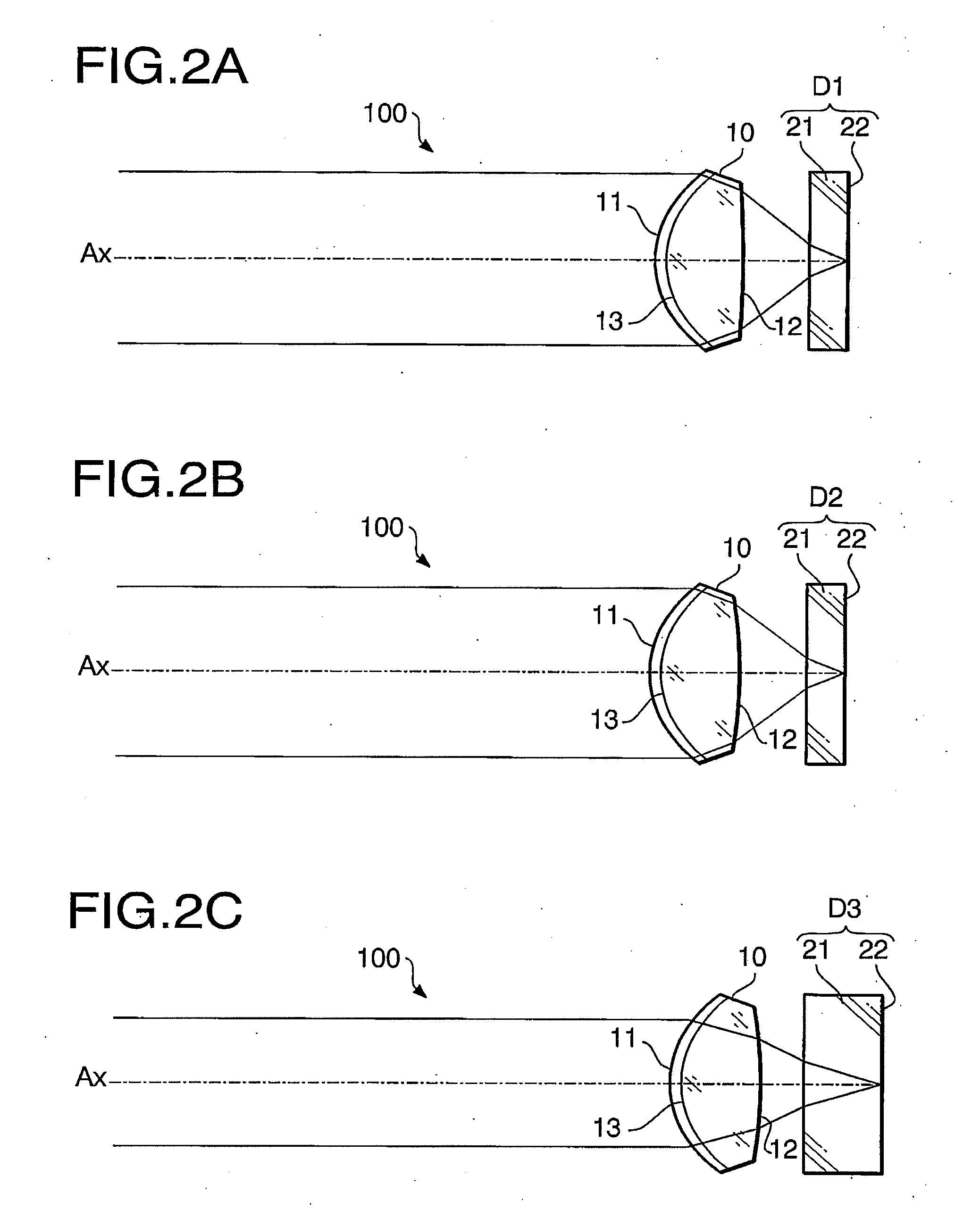Objective lens for optical information recording/reproducing device
a technology of optical information and recording/recording device, applied in the field of objective lenses, can solve the problems of difficult to properly select a suitable combination of resins from existing optical materials, difficulty in reducing various aberrations, and difficulty in reducing the degree of freedom of material selection,
- Summary
- Abstract
- Description
- Claims
- Application Information
AI Technical Summary
Benefits of technology
Problems solved by technology
Method used
Image
Examples
first example
[0070]The overall configuration of the objective lens 10 as a first example is shown in FIG. 3. The cementing surface 13 of the objective lens 10 of the first example is provided with a diffracting structure designed so that the ratio among the diffraction orders of the first through third laser beams maximizing their diffraction efficiency will be 3:2:2 (according to the aforementioned first configuration example). The following Table 1 shows the refractive indexes of the first and second optical members 10A and 10B (forming the objective lens 10 of the first example having such a diffracting structure) for the first through third laser beams.
TABLE 11ST laser beam2nd laser beam3rd laser beamwavelength (nm)405660790refractive index n11.574941.556701.55311refractive index n21.560231.540441.53653
[0071]According to Table 1, the values of the conditions (1), (2) and (5) of the objective lens 10 of the first example are 1.105, 1.127 and 0.015, respectively. Thus, the objective lens 10 of...
second example
[0072]The overall configuration of the objective lens 10 as a second example is also shown in FIG. 3. The cementing surface 13 of the objective lens 10 of the second example is provided with a diffracting structure designed so that the ratio among the diffraction orders of the first through third laser beams maximizing their diffraction efficiency will be 5:3:3 (according to the aforementioned second configuration example). The following Table 2 shows the refractive indexes of the first and second optical members 10A and 10B (forming the objective lens 10 of the second example having such a diffracting structure) for the first through third laser beams.
TABLE 21ST laser beam2nd laser beam3rd laser beamwavelength (nm)405660790refractive index n11.583741.565841.56228refractive index n21.560231.540441.53653
[0073]According to Table 2, the values of the conditions (3), (4) and (5) of the objective lens 10 of the second example are 1.080, 1.095 and 0.024, respectively. Thus, the objective ...
third example
[0074]A third example described below is a specific example of the optical information recording / reproducing device 100 equipped with the objective lens 10 of the embodiment. The overall configuration of the optical information recording / reproducing device 100 of the third example is shown in FIG. 1. The following Table 3 shows concrete specifications of the objective lens 10 of the optical information recording / reproducing device 100 of the third example.
TABLE 31st laser beam2nd laser beam3rd laser beamWavelength (nm)405660790Focal Length (mm)3.003.103.12NA0.650.630.51Magnification M0.0000.0000.000
[0075]As indicated by the “Maginfication M” in Table 3, the laser beam is incident upon the objective lens 10 as a collimated beam in the optical information recording / reproducing device 100 of the third example irrespective of which of the optical discs D1-D3 is used (i.e. irrespective of which of the first through third laser beams is used). The following Tables 4-6 show specific numeri...
PUM
| Property | Measurement | Unit |
|---|---|---|
| wavelength | aaaaa | aaaaa |
| wavelength | aaaaa | aaaaa |
| densities | aaaaa | aaaaa |
Abstract
Description
Claims
Application Information
 Login to View More
Login to View More - R&D
- Intellectual Property
- Life Sciences
- Materials
- Tech Scout
- Unparalleled Data Quality
- Higher Quality Content
- 60% Fewer Hallucinations
Browse by: Latest US Patents, China's latest patents, Technical Efficacy Thesaurus, Application Domain, Technology Topic, Popular Technical Reports.
© 2025 PatSnap. All rights reserved.Legal|Privacy policy|Modern Slavery Act Transparency Statement|Sitemap|About US| Contact US: help@patsnap.com



